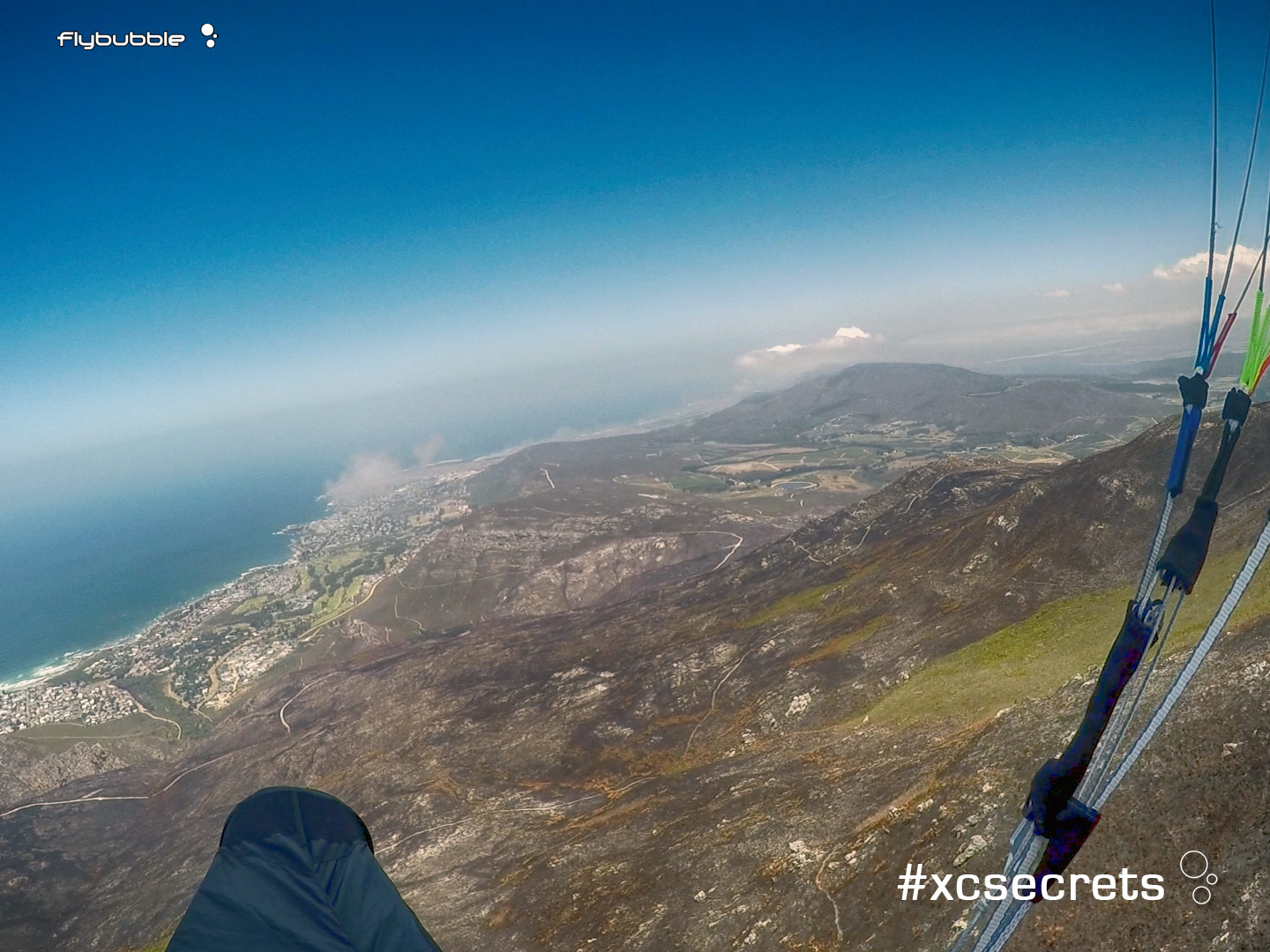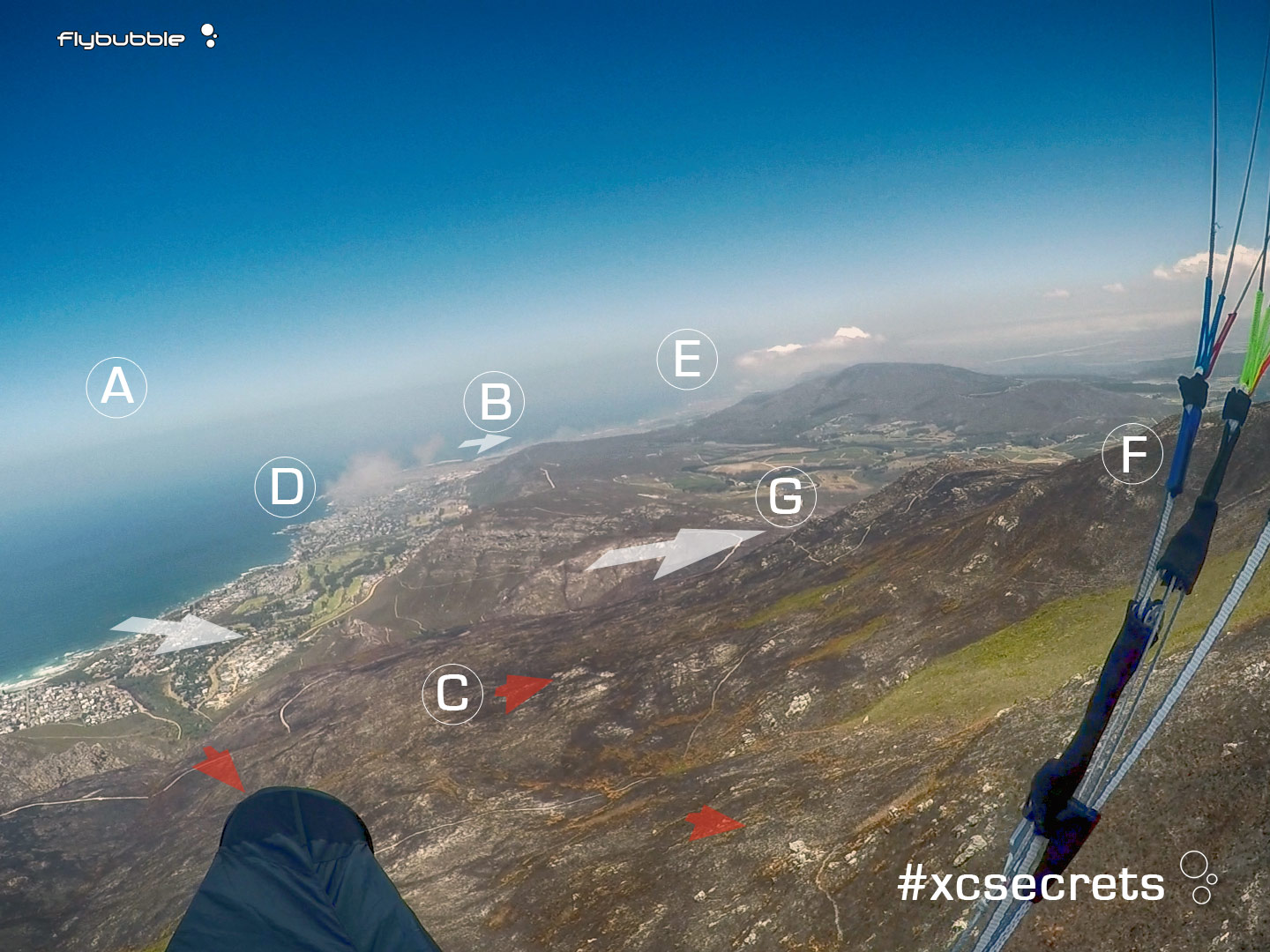
What do you see? Analyze the snapshot above yourself, before scrolling down for answers.


6. Coastal inversion, Hermanus, South Africa, midday, midsummer. Trying to build enough height to go XC.
A. The haze shows where the inversion layer is, often present near the coast due to the cooling effect of the sea on the lower air layer. Most thermals cannot penetrate the warmer (clear) air which lies over the top of this humid layer.
B. Hard to see, but there’s some smoke here pushed right by the seabreeze, running up to the hills and creating a smoky cloud. In the absence of this smoke, I’d still assume that’s the wind direction due to the warmer land creating an onshore flow. The strength of that wind suggests we could get down the ridge to the distant clouds, but not back again.
C. this terrain has recently burned. The black colour is enticing for thermal generation. Wood (even burnt wood) doesn’t heat up much, but the lack of vegetation allows the rocks to get direct sunlight, so this whole slope is potentially the best area for thermals. The slope is shallow, so the thermals will tend to slide uphill rather than releasing, and it will be necessary to stay in very close to the slope to benefit from the upslope breeze. Slow, scratching flying will eventually get you to the top. The air is in contact with the heating surface all the way up, which allows it to boost you very high into the inversion, much higher than anywhere else in the image.
D. The little cloud (below us) is probably not a thermal, it indicates moist air that has been drawn in towards this working slope, and warns of impending stability coming in to ruin the fun. Time to get away from here, before the warmer air is replaced by cooler murk and lowering cloudbase.
E. The large area of cloud here is slightly lower than us, and much lower than the clouds to the right. This shows the air inland is better, so we need to find a route over the back.
F. The exit point that should capture most of the thermals sliding up the ridge from C without being affected by G.
G. Don’t venture too far past the corner because the wind is focused up the ravine towards G where the venturi will accelerate the wind, reducing the chance of thermals. The trick will be to gain height at F and try to go over the back without entering the accelerated flow, staying downwind of the lighter winds experienced on the slope in the foreground.
Zuhaib Zafar suggested flying out over the sea for some playtime and a landing on the beach. Sometimes these aesthetic options are easy to miss when you're focused on making an XC out of anything. It's a poor day for XC. Perhaps try a ridge run to the distant clouds then go for the beach?
